World 🢖 Asia 🢖 Uzbekistan
Caves 🢔 Geological wonders 🢔 Categories of wonders
Wonder
Boybuloq (Vishnevsky – Boybuloq cave)
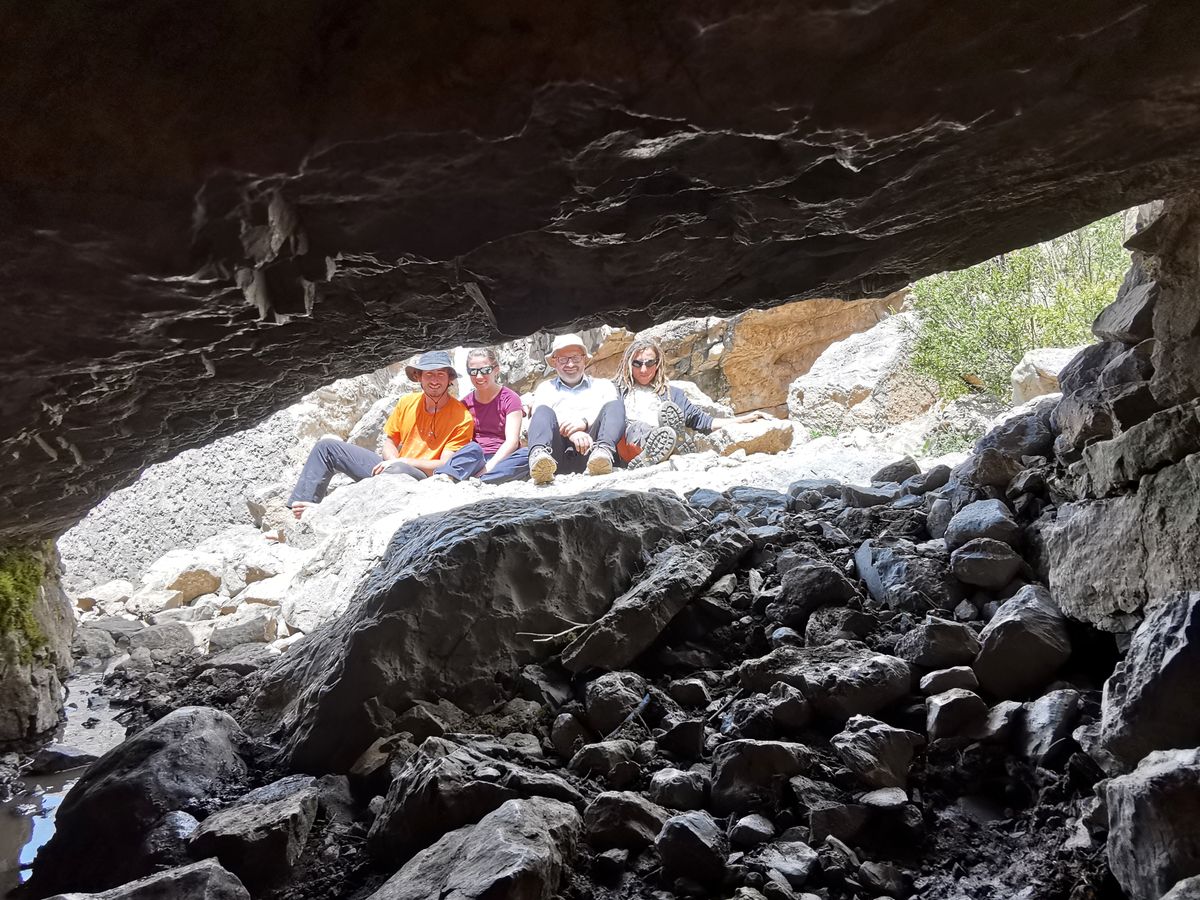
 In short
In short
There remain just some 70 m of distance between Boybuloq and Vishnevsky caves. When this passage will be passed, the united system of both caves will be the third deepest cave in the world with a depth of 2033 m and a length of some 25 000 m.
 40.0%
40.0%
GPS coordinates
Location, address
Alternate names, parts of the cave system
Length
Depth
Map of the site
If you see this after your page is loaded completely, leafletJS files are missing.
 In detail
In detail
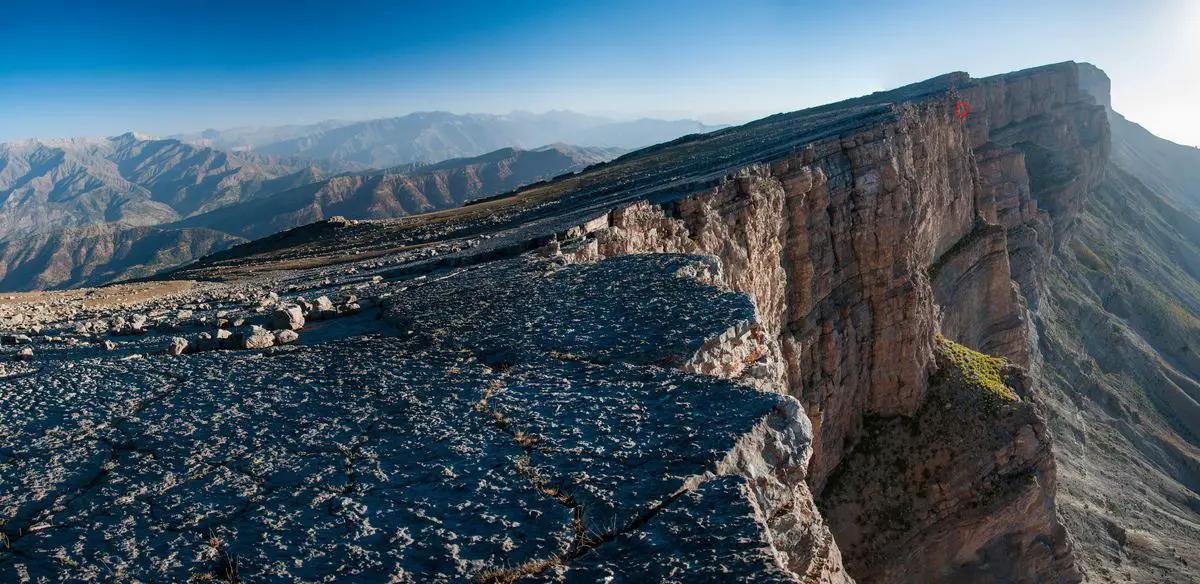
Description
This cave system has formed in the Upper and Middle Jurassic limestone. The limestone layer is 200-350 m thick – but it is oblique. The cave has formed (and continues to be formed) through the process of condensation.
The cave system currently (July 2022) consists of two closely located and, most likely, linked caves: Boybuloq and Vishnevsky Cave.
Boybuloq
Boybuloq is a narrow cave with oblique passages that in some places turn into vertical, up to 30 m deep pits and then again continue as narrow passages. The entrance is at a height of 1670 m (2.). In some places, the cave passages are just 20 cm wide. At the same time, the passages are continuously meandering. This combination makes the cave dangerous – others can not help someone who gets stuck in the narrows or falls into narrow pits. Thus, a speleologist who happened to fall and broke both legs had to crawl out of the cave on his own because no one could efficiently help to move him (1).
Upwards from the main entrance the cave passages go 272 m high. At this height, the passages become too narrow to pass, but the strong air current shows that it is connected to another – Vishnevsky Cave.
Vishnevsky Cave
This cave got its name from a well-known Russian speleologist Aleksandr Vishnevsky (1955-2015). He was one of the explorers of Boybuloq.
In general, Vishnevsky Cave is somewhat more spectacular than Boybuloq. It has an impressive 90 m tall chimney “Lucas Baldo” as well as nice cave formations inside. This is an alpine cave – the entrance in the cave is located at a height of 3,522 m and the climate at its entrance is harsh.
Potential for a single system
Physically both caves are connected but the passage between them is too narrow for a person to squeeze through it. Thus, formally these are two separate cave systems… for now. There is a possibility that a passable gallery will be found in the future.
Boybuloq and Vishnevsky Caves are located in a very suitable, rare geological formation: a thick limestone layer that, thanks to tectonic processes, is oblique. In most cases, the limestone layers are horizontal and rarely reach the extreme thickness of 2 kilometers. The current world’s deepest caves – Veryovkina Cave (2,212 m) and Krubera Cave (2,197 m) – have formed in such thick layers. Most likely, further research of these world-record holders will not make them much deeper because the full thickness of the limestone layer has been reached (or, almost reached).
The geological formations in Uzbekistan, around Boybuloq, though, offer a theoretical possibility of deeper caves.
History
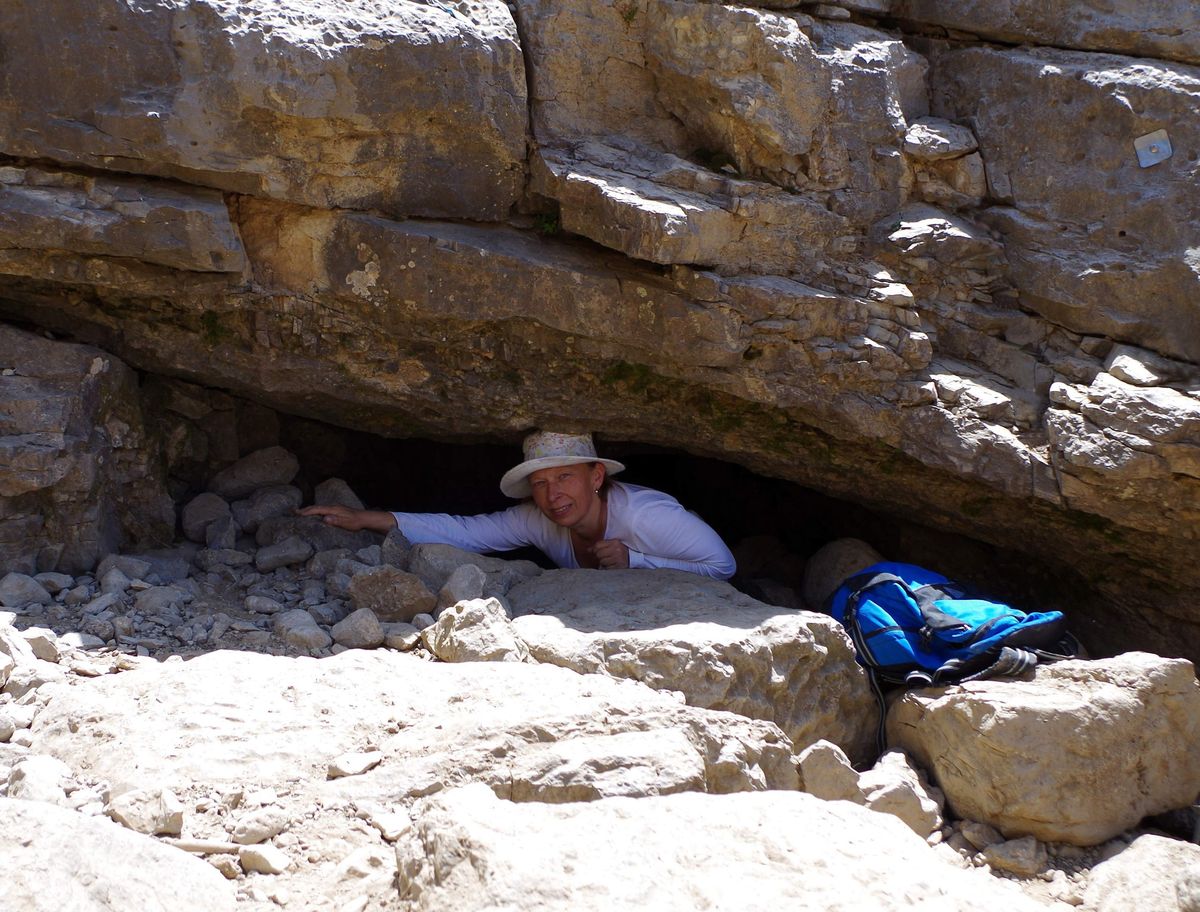
The name of the cave, Boybuloq, could be translated from the Uzbek language as “a rich source”. This enormous cave indeed is a source of clean water: after rain, a stream flows from it that is of huge value to the nearby ancient village of Dehibolo.
Thus, local people knew about the existence of the cave since ancient times.
- April 1971 – the cave got tragic fame among the locals of Dehibolo after a local farmer Mustafo Holmominov disappeared in it. He was an avid, enthusiastic explorer of this cave but (as investigated by other speleologists later), after his lantern went out, he lost the way out, fell in a 27 m tall pit, and, most likely, died due to the fall. His lantern still stands above this pit.
- August 1985 – speleological research started after the Russian speleologists learned that in this region are found deep caves. Speleologists from Ekaterinburg in this year entered the cave and found the remains of Mustafo. The cave itself was deemed to be a promising find and further expeditions took place in the following years.
- 1989 – a joint Soviet-Italian team explored the passages up to the total depth of 1,310 m and in 1990 the next expedition expanded the depth to 1,376 m.
- 1991 – 1992 – was reached the height difference of 1,415 m.
- 2007 – 2021 – almost every year there are expeditions to Boybuloq, gradually expanding the network of the known passages.
There was a hope to find a link between Holtan-Čašma spring and Boybuloq – this height difference would make Boybuloq the deepest cave in the world in these times. The spring was dived up to 170 m far, reaching unpassable passages. - 2015 – speleologists searched for the entrance in the passages above the Boybuloq. They discovered several caves and the most promising was code-named ČB-15 (Chul Bair 15) at the height of 3,522 m. Later this cave was named Vishnevsky Cave to commemorate the outstanding speleologist who deceased in this year.
- 2016 – a joint Russian-Italian expedition researched Vishnevsky Cave and got a conviction that this cave is headed towards Boybuloq and might form a single system with it. Vishnevsky Cave was researched to a depth of 234 m and length of 1,089 m.
- 2017 – Vishnevsky Cave was researched to a depth of 586 m and a length of 2,800 m.
- 2019 – more spectacular passages and pits were discovered in Vishnevsky Cave and the explored depth of this cave reached 1,131 m and length of 8,004. Thus, even without the prospective connection to Boybuloq, it was a very impressive cave! Only 200 m of horizontal distance and 50 m of vertical distance divided Vishnevsky Cave from Boybuloq.
- 2021 – the researched depth of Boybuloq reached 1430 m and the cave length was 15 212 m. The distance between Boybuloq and Vishnevsky Cave was further decreased to a mere 70 m – but the connecting passage was too narrow to pass through it.
Let’s wait for the results of the next expeditions!
References
- Сергей Куклев, Азия: туда и обратно. Начало. Цены и границы., Челябинский рабочий, 1999. Accessed on 13 July 2022.
- Вадим Логинов. Бой-Булок-2008, СГС. Первые полвека. 2011. pp. 58-66.
 Linked articles
Linked articles
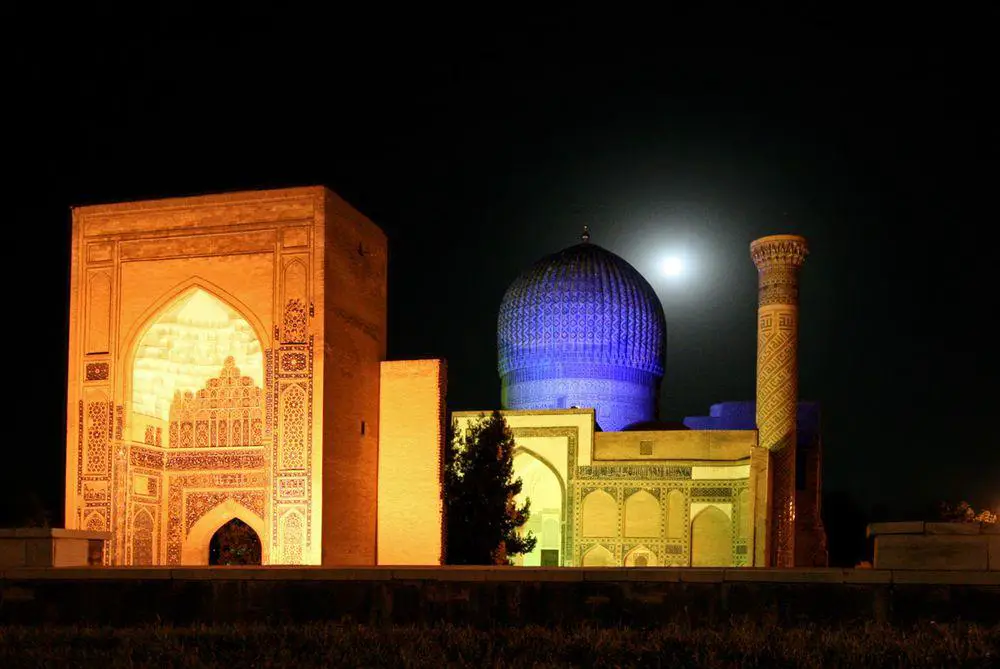
Wonders of Uzbekistan
Uzbekistan is a comparatively dry, mostly desert-covered land very far from any sea… and this is one of the reasons why this country has such an amazing cultural heritage!
For millennia Uzbekistan has been crossed by trade routes uniting prehistoric, ancient, and medieval cultures of Eurasia. For a shorter route caravans had to cross inhospitable deserts and no one could afford to miss the oases in Uzbekistan. Here, at the crossroads of diverse cultures and wealth developed rich and sophisticated cities, such as the glorious Samarkand, Bukhara, and Khiva.
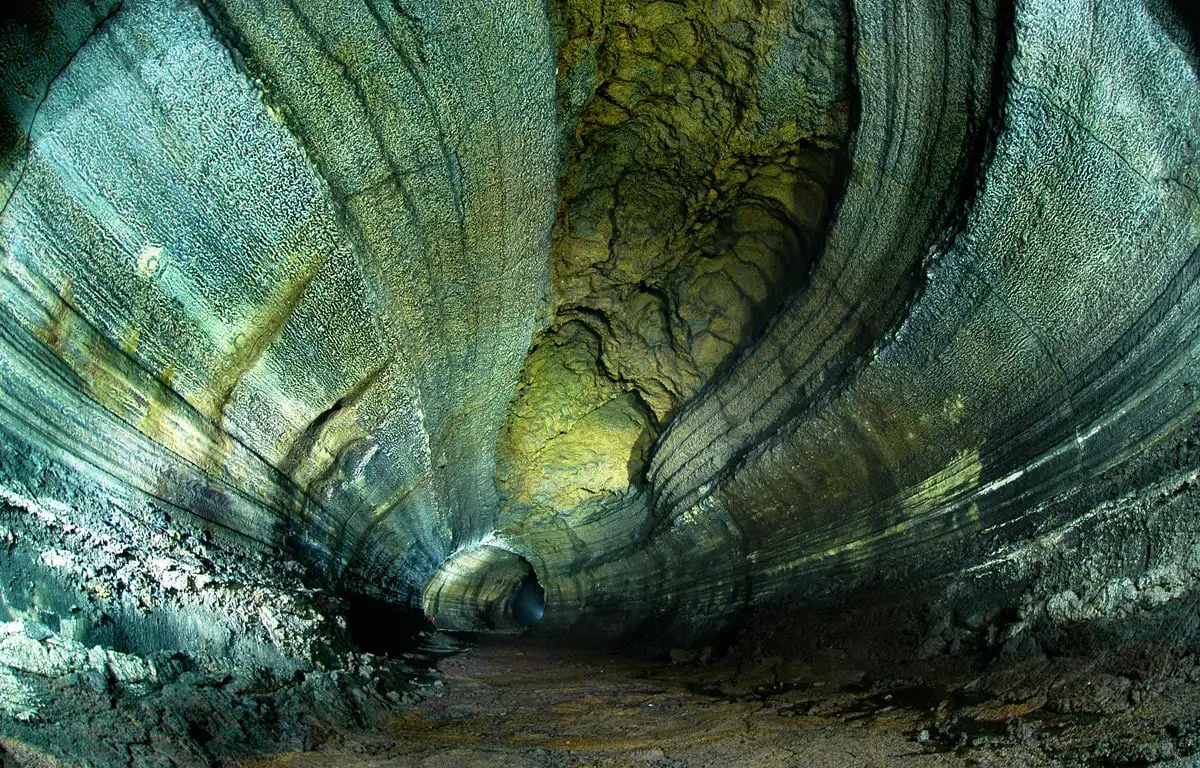
Caves
Every year there are reported exciting discoveries of new caves and discoveries of new qualities such as cave paintings in the ones known before. But there still is a feeling that our knowledge covers just a small part of all these monuments of nature.
Though, those which are known to us, offer a surprising diversity of unusual features and impressive sights.

Wonders of Asia
Any other continent (and part of the world) seems small if compared to Asia. This refers also to natural and man-made heritage: in Asia are not just thousands of great landmarks, there are found landmarks created by thousands of diverse cultures from ancient Phoenicians to the mysterious small people in the Philippines and eastern islands of Indonesia.
 Recommended books
Recommended books
100 of the Deepest Caves In the World
Are you looking for a journey that will take you through 100 of the Deepest Caves In the World, along with funny comments and a word puzzle? Then this book is for you. Whether you are looking at this book for curiosity, choices, options, or just for fun; this book fits any criteria. Creating 100 of the Deepest Caves In the World did not happen quickly.
Speleology: Caves & the Cave Environment
This newly-revised edition of a classic introduction to speleology covers the latest discoveries about the mysterious world of caves. Drs. Moore and Sullivan are among the founders of modern cave research. They present here the principles of speleology in language that anyone can understand. The authors show how cave processes involve biological as well as geological, chemical, and physical processes, and they examine such topics as the origin of caves, the structure of cave food chains, and the evolution of blind cave animals. The book was a selection of the Science Book Club and is widely used as a textbook in high schools and colleges.


